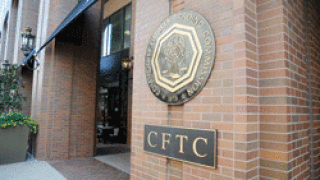Derivs - Regulation
-
The bid/offer spread has significantly contracted since US regulation requiring certain products to be traded on swap execution facilities became effective. UBS’ aggregation model Neo has seen spreads decrease on its SEF electronic order books by approximately 50%.
-
A significant number of senior buy- and sellside participants think that the Markets in Financial Instruments Directive II will have a negative impact upon liquidity, according to a survey conducted by MarketAxess and Trax.
-
Bloomberg has launched its own swap data repository, serving as a centralized record keeping facility for interest rate, credit, fx, commodity and equity swaps transaction data.
-
Complex package transactions may be difficult to price electronically now that the package transaction requirement to trade such products on swap execution facilities is live, according to Nathan Jenner, coo of fixed income, currency and commodity trading at Bloomberg.
-
Some swap execution facilities could face closure as they struggle to attract liquidity and trading volumes. Market participants are beginning to question what needs to occur for SEFs to survive in the new and evolving derivatives market structure, report Beth Shah and Daniel O’Leary.
-
ICAP’s European swap execution facility went live Monday, following temporary registration approval from the US Commodity Futures Trading Commission to operate a multi-asset class SEF. This makes it the first non-US domiciled venue to be approved.
-
The swap execution facility aggregation model, which allows market participants to connect to multiple SEFs without being a direct member, is favorable for buysiders who do not have the resources to connect to all facilities, according to speakers at the TABB Forum Derivatives 2014: A Market in Transition conference in Chicago, on Tuesday.
-
The access to electronic trading systems and the proliferation of technology over recent years is allowing all market participants to compete in the financial markets, advantaging buysiders and other trading firms, according to Zem Sternberg ceo & managing partner at Lake Hill Capital Management.
-
Speed has always been a defining feature of the trading process, especially across the very liquid equities and fx markets. Moving from the open cry through to the information age and high-speed computing, the quicker an order could be placed and the faster information could be gathered, the more competitive advantage a firm could gain over its rivals. As the new millennium kicked off, vast sums were being bought and sold in milliseconds, and an interminable arms race seemed to have become an industry staple, with trading firms racing towards zero latency.
-
Market disruption and dislocation could occur should third country central counterparties not receive recognition under the European Market Infrastructure Directive, according to Scott O'Malia, Commissioner at the US Commodity Futures Trading Commission.
-
The US Commodity Futures Trading Commission has announced further implementation details surrounding the trade execution requirement for certain interest rate and credit default swaps, as swaps that are part of a package transaction will be required to be traded on a swap execution facility or designated contract market beginning May 16.
-
The US Commodity Futures Trading Commission has issued another no-action letter for certain members of swap execution facilities and designated contract markets from the requirement to record oral communications, in connection with the execution of swap transactions.




